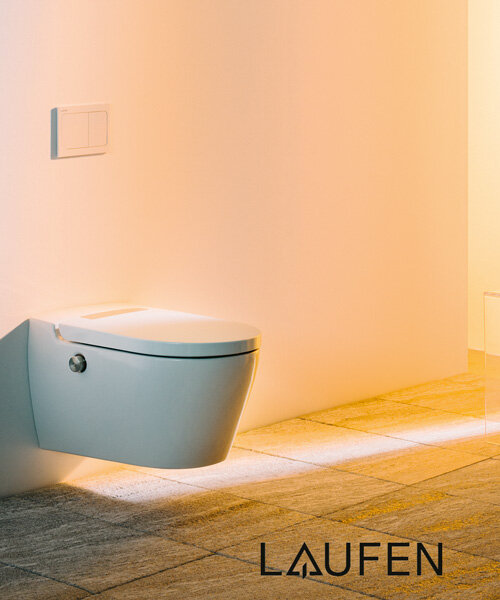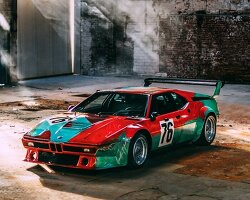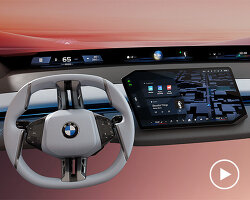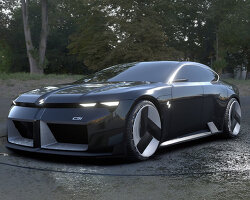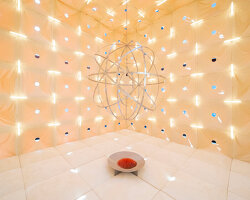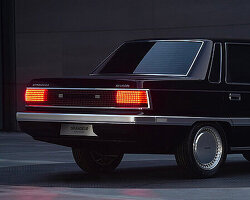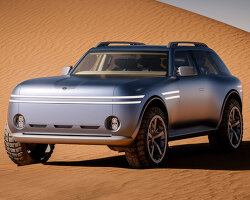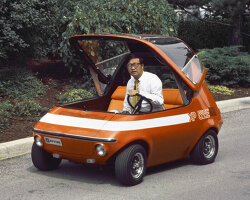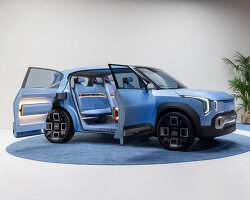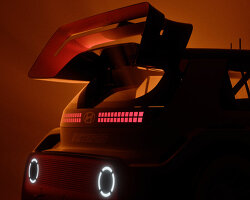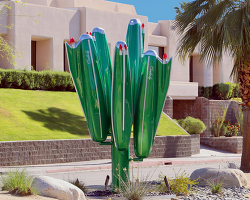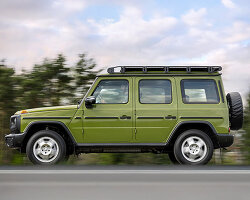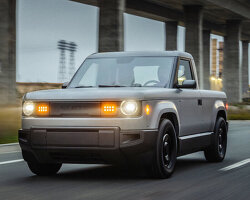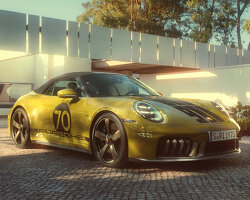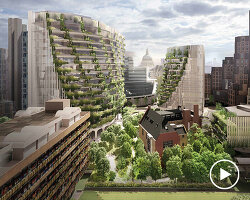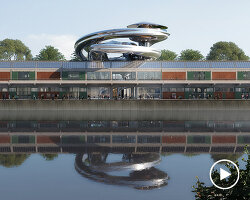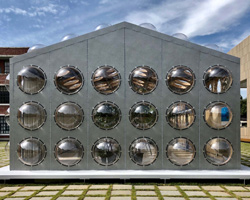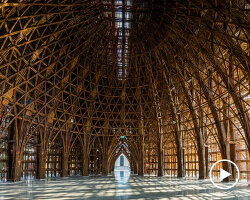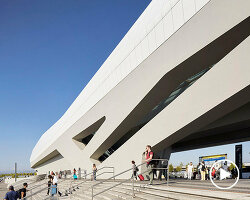‘design is the key to unite all these new technologies,’ explains domagoj dukec, head of BMW design, as he discusses the future of mobility for the brand. in an age of constant technological advancements – from self-driving assistance to material innovation like 3D-printing – the world of automotive design is changing fast but not with radical shapes. dukec and his team are using technologies to create new and enhanced experiences with almost endless possibilities for customers. these are embedded into the background to ensure the forms of these cars are still typically BMW: dramatic, dynamic and luxurious.
designboom interviews domagoj dukec as he delves deeper into the design philosophy of BMW, how the brand reinvents itself whilst always respecting its heritage, and how user-centric experiences have shaped their new driving modes, especially in the Vision iNEXT and Vision M NEXT cars.
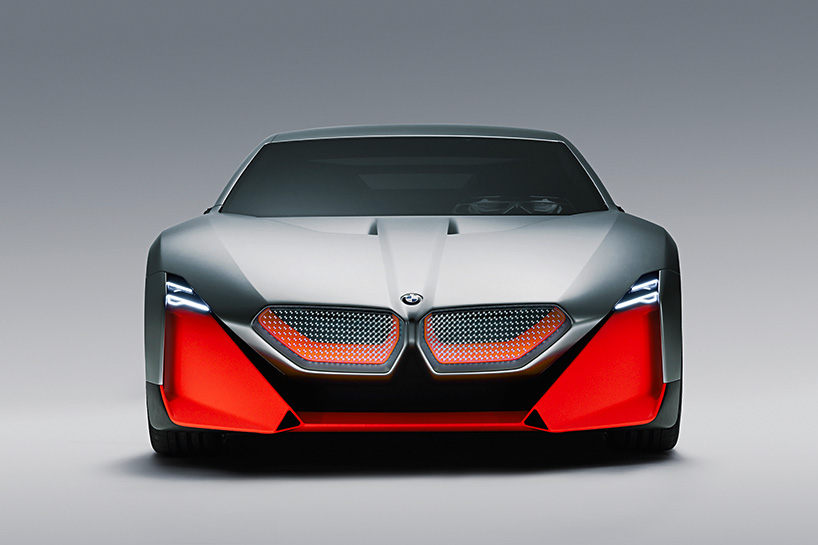
the Vision M NEXT car was presented in june 2019
(main image: domagoj dukec standing beside the BMW Vision M NEXT)
‘we believe in the power of choice,’ begins domagoj dukec. as cars embrace new technologies such as autonomous systems, BMW and their designers are ensuring customers are still offered their own ultimate driving experience. in fact, they are actually integrating technology into the background of their designs, from the powertrains to the adaptable furniture and interior fabrics, creating mobility spaces that adapt to your needs. the innovations are there to help and enhance the experience but are free to the user to choose when, where and how it affects their journey. this power of choice is exemplified by BMW‘s two driving modes and vision cars: EASE and BOOST, and the Vision iNEXT and Vision M NEXT.
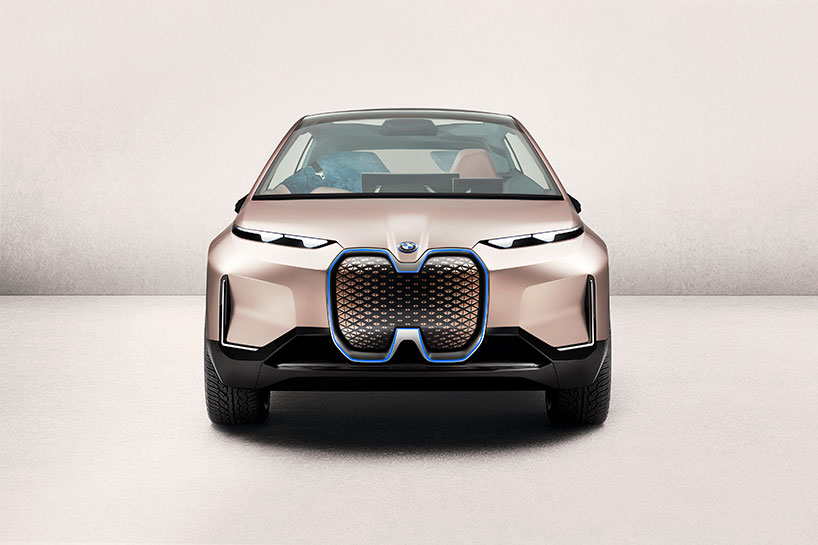
the Vision iNEXT debuted in november 2018
the Vision iNEXT is described as your favourite space as it encloses a natural light-filled cabin of endless possibilities, which is enriched with embedded technology and highly sculptural yet adaptive furniture. it offers users the freedom of choice to drive yourself or be driven. the Vision M NEXT defines the future of pure, sporty driving. the intelligent vehicle adapts its controls and interior architecture to best fit the driver, as if it were a racecar. the whole experience vividly connects you to the raw pleasure of driving, the feeling of speeding along the road, and the emotions encapsulated on your journeys.
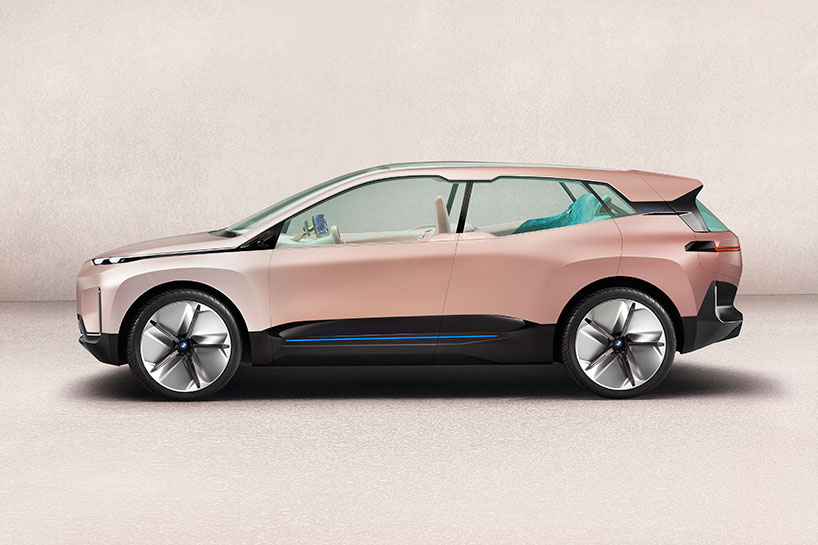
the Vision iNEXT’s smooth exterior surfaces are coated in greyrose copper finish
following the unveiling of the BMW Vision M NEXT in 2019, domagoj dukec further explores the car’s user-centered design, how it completes the brand’s driving modes alongside the Vision iNEXT, and what it promises to customers for the future of BMW design.
designboom (DB): firstly, could you introduce yourself and your role at BMW?
domagoj dukec (DD): my name is domagoj dukec and I am the head of BMW design. I was appointed to this role in april 2019 but had been at the company for nine years already. I have been a car designer since 1997 and worked for many other brands beforehand, but I always knew BMW would be the pinnacle for me.
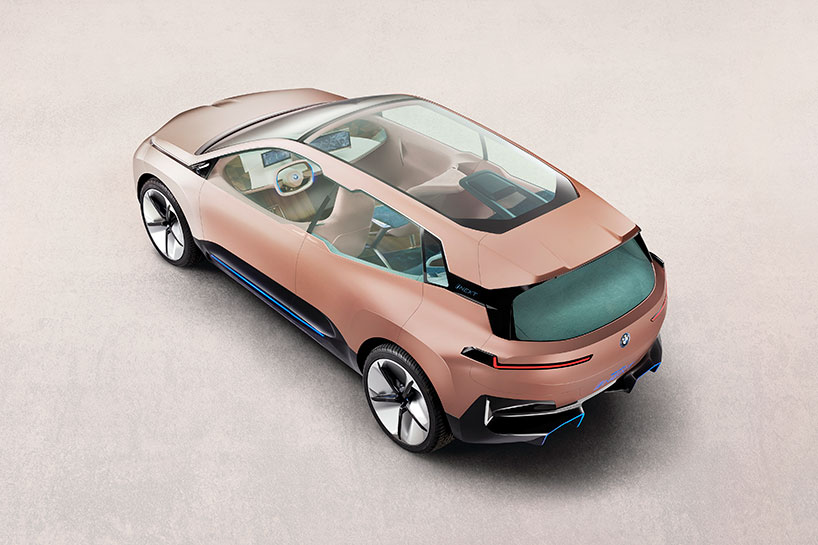
its large glass greenhouse ensures a light-filled, open cabin within
DB: how is BMW looking towards the future?
DD: the BMW Group is once again pioneering into a new era. by embracing innovative technologies, digitalization and sustainability, we are turning these new opportunities into unique mobility experiences for our customers. this ‘transformation’, as we call it, is our commitment to a future that will offer industry-leading standards in terms of mobility.
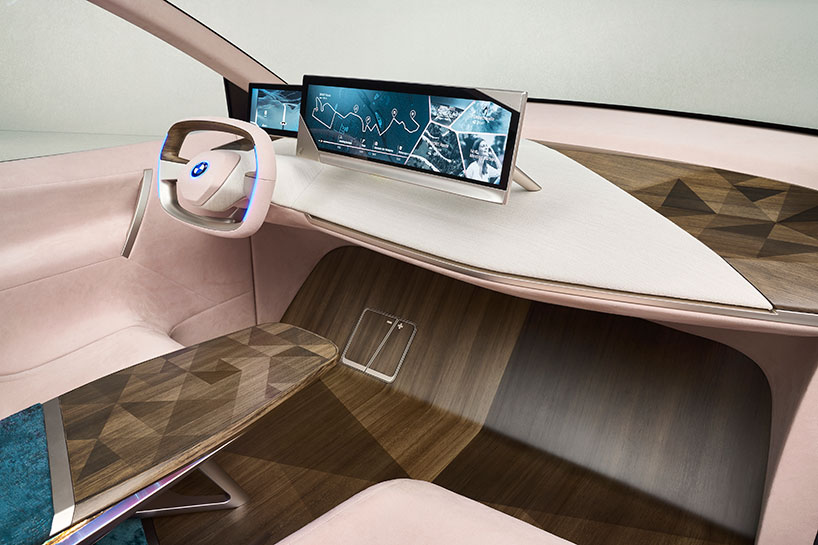
highly crafted yet adaptable furniture furnishes the interior
DB: with technological developments, such as autonomous driving and car sharing, seemingly leading the automotive industry, what role does design play in this future for the brand?
DD: firstly, as cars do become more and more intelligent, it is important for us [BMW and their designers] to alleviate any fears some might have about self-driving, especially as BMW has always represented sheer driving pleasure. we see design as the key to unite all these new technologies in a luxury product like BMW. the first and biggest reason why people buy into our brand is its design, and that will continue to be the case in the future. design is not just the shape of a car; design is about the experience, how it feels to drive, be a passenger and interact with the whole car. with such a diverse product range in our portfolio, we create each model to transport our and the owner’s emotions.

like its jacquard rear bench, technology is hidden within the design and is available to users only when needed
DB: following these changes in the automotive industry right now, will cars – most especially BMWs – still appear familiar?
DD: the object of a car is not changing but the experience is, and that is what BMW is designing for the future. in respect to the BMW brand, heritage and design DNA, the forms of our cars are not radically changing. we are using technology, though, to add new, different emotional experiences to the same shapes, basically maximizing geometric variants.
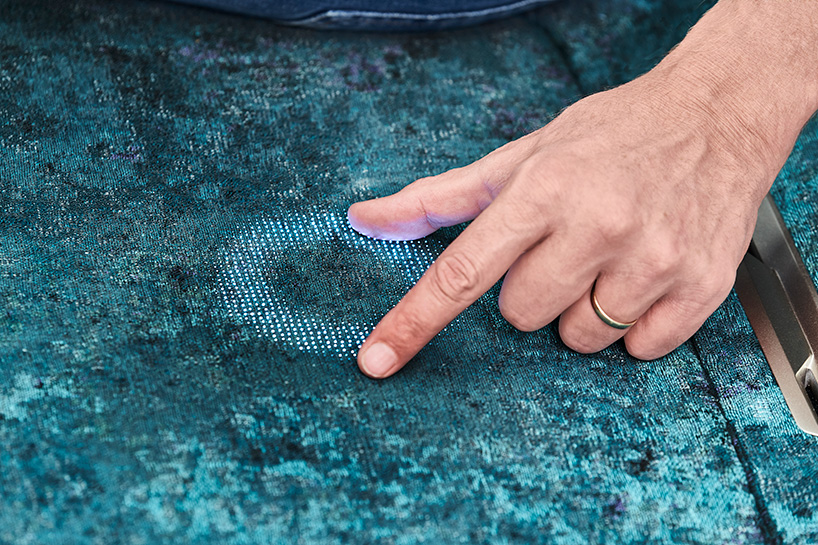
passengers can use the ‘shy-tech’ to control functions within the cabin, such as music and lighting
DB: what are BMW’s EASE and BOOST modes, and what is the importance of offering both options to customers?
DD: we believe in the power of choice; customers should always decide what mobility experience they would like. EASE is all about enriching the moment when you are being driven. the Vision iNEXT concept [debuting in 2018] showcased how our cars can offer your own personal space where you can relax, work, be entertained, chat with others, or simply wonder as the world passes by. BOOST is more familiar to people as it is about driving yourself, but its design still pushes this experience to the max. this is what the Vision M NEXT embodies – it is a sports car that connects human and machine in a highly emotional way.
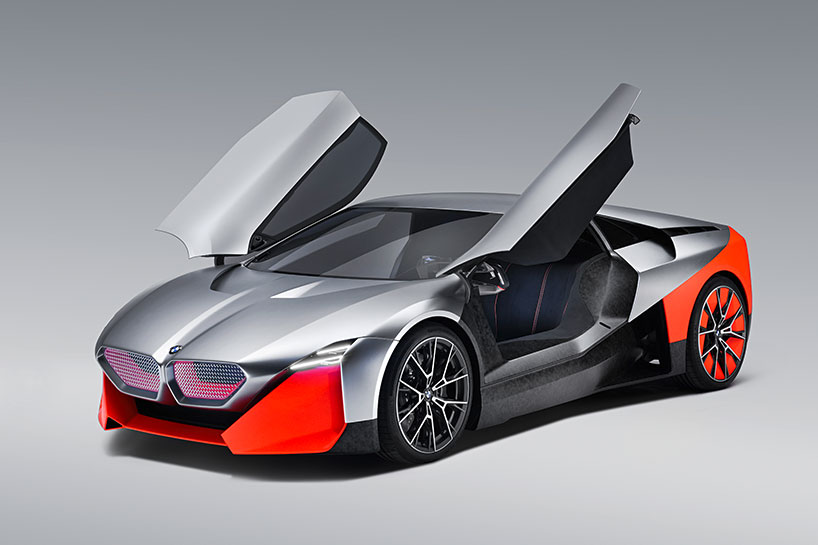
the Vision M NEXT proposes the future of BMW’s sheer driving pleasure
DB: as the head of design for the BMW Vision M NEXT, how does this concept connect to the brand’s rich history, especially in motor sports and racing?
DD: the Vision M NEXT represents the dream car for BMW and automotive enthusiasts alike. it is a highly emotional and very sporty vision. as such, it references many of our most special and iconic models, such as the BMW turbo, BMW M1 and BMW i8. the Vision M NEXT exemplifies how the future of BMW M – our motor sports sub-brand – might look as an eye-catching electric sports car and offer an experience that is completely focused on the driver.
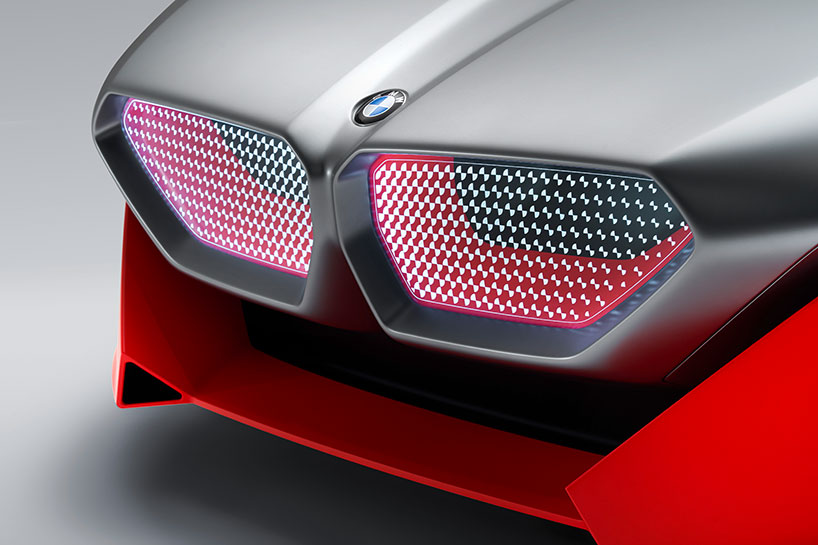
its wide, redesigned kidney grille embraces a mesh-like covering
DB: the Vision M NEXT does showcase many new interpretations of BMW styling though. how have these elements, such as the kidney grille and headlamps, been redesigned?
DD: to start with, the concept has an integrated bumper just like the turbo model [from 1972] – it isn’t visible. the turbo’s side vents have also been reimagined as the sharply-shaped windows on the roof’s angular rear in the Vision M NEXT. however, at the same time, we have explored other new interpretations of our classic design elements. BMW’s iconic kidney grille has been redesigned with a wide yet deep form with a mesh-like covering. on either side, graphically-lined laser wire technology shapes very sporty headlamps for the car. finally, an abrupt curvature forms our latest hofmeister-kink with the small side windows, which actually reveal hidden air-intakes.
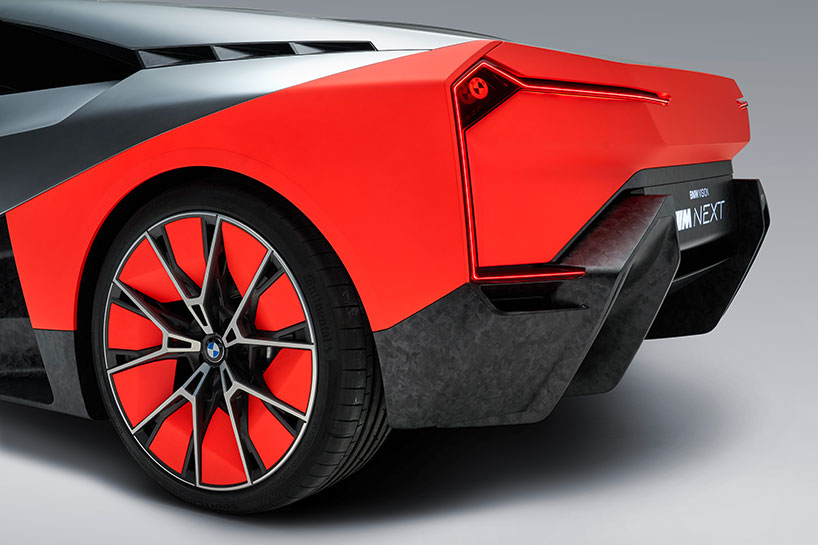
its hofmeister-kink continues into hidden air-intakes that extend towards the rear
DB: how does the neon blocking add further character to the Vision M NEXT’s exterior?
DD: firstly, BMWs have always been a mixture of two elements: dynamism and elegance. this tension is very interesting as it ensures the product is multi-dimensional and unexpected. the Vision M NEXT does not distinguish a transition in its colors, which are blocked in red and silver. these two tones reveal the different souls of the car: the neon red is a nod towards its directness to sheer driving pleasure; silver exemplifies how this is achieved by enhancing electricity as it is a hybrid.
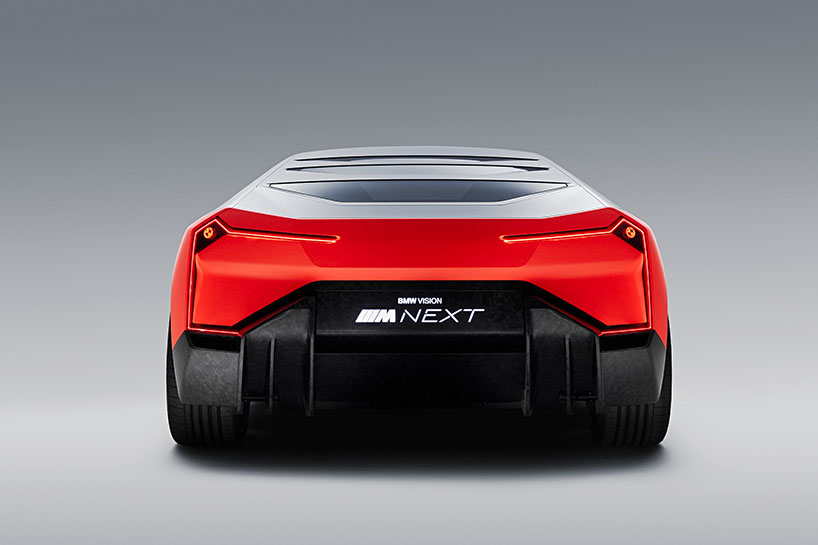
its silver and red color-blocking highlights the car’s two different personalities
DB: although minimalist in appearance, how is the interior still a highly personal space?
DD: overall, the minimalist environment ensures everything is focused on the driver and the road. however, there are a lot of integrated materials that create a space that still feels personal and very engaging. the whole space is one clean yet undulating surface, which is purposely dark in order to enliven your senses and focus on the road. there are no individual seats and no gaps, just a very inviting seating space made from memory foam. when you sit inside, the first thing the driver sees is the steering wheel with the pulsating BMW logo in the middle. it is a fingerprint sensor so when you press it, the car not only starts but also detects the driver. the intelligent vehicle recognizes you and positions the seat and steering wheel to your ideal setting, as if you were in a proper racing car. it ensures the cabin is perfect for you.
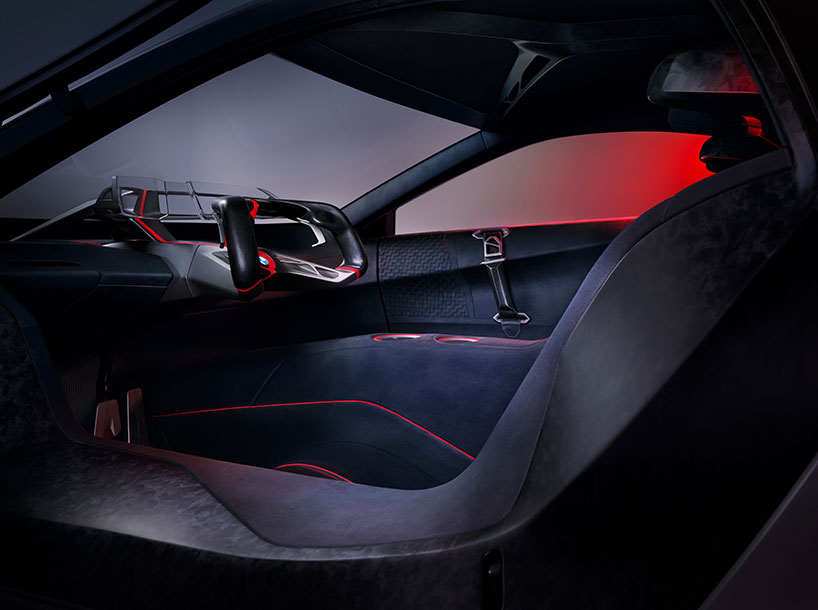
the dark interior is designed to focus the user’s attention on the BOOST pod and the road around them
DB: as the interface between the driver and the vehicle, what are the different levels of the BOOST pot?
DD: the three tiers of the BOOST pod allow the VISION M NEXT to adapt to your level of driving and deliver your ultimate driving experience. the first interface is the steering wheel. it features a small display on top, like a roll bar. there are micro joysticks hidden underneath the leather on the back of the wheel, which allow the driver to pre-configure driving modes. the second level consists of a transparent OLED that wraps around the top of the dashboard and is illuminated as soon as you start the trip. it only displays the most important elements of the ride: your heart rate, the RPM, energy level, BOOST mode, and speed. the cluster on the screen is reduced and turns yellow to signify the seriousness as you drive faster. this narrows your focus, as if you were looking through a racing helmet. the final level is only activated when the driver reaches a really fast speed. the OLED is replaced by a heads-up display that communicates your speed and next turn. this ensures the driver never has to look away from the street. as the car slows down, the displays reverse in levels.
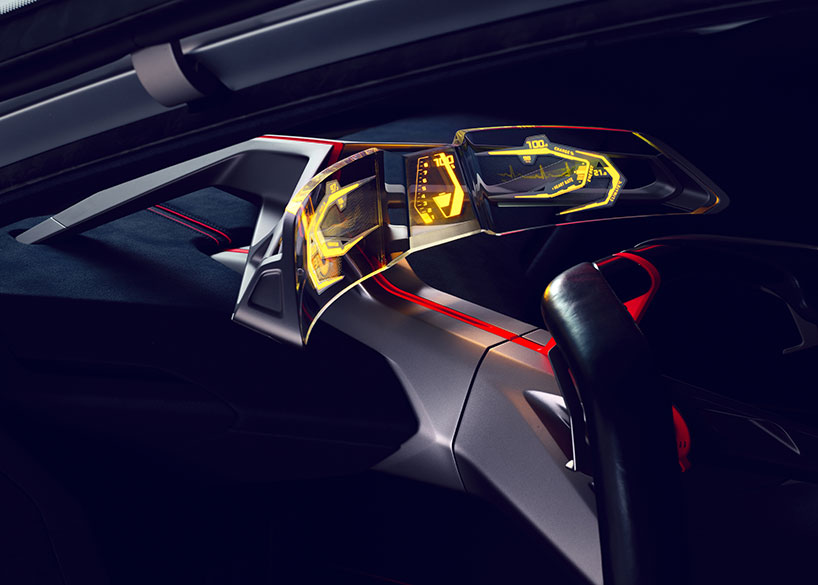
three visual tiers define the pod as well as the key information the driver needs
DB: how has the Vision M NEXT integrated environmentally-friendly materials into its interior design?
DD: we believe sustainability is important for every car, especially sports models. the BMW Vision M NEXT is even more attractive as we have justified a sports car by making it sustainable. however, it is also important to understand that people are paying BMW for luxury so sustainability cannot just be recycling, it has be to environmentally-conscious materials that match our brand’s DNA. for example, organically-sourced leather is upholstered on very restricted areas of the interior that are usually touched by users, such as the steering wheel and door openers.

rich yet sustainable materials are interwoven within the interior of the car
watch domagoj dukec, head of BMW design, provide an in-depth study of the design of their Vision M NEXT model at the top of this article.
